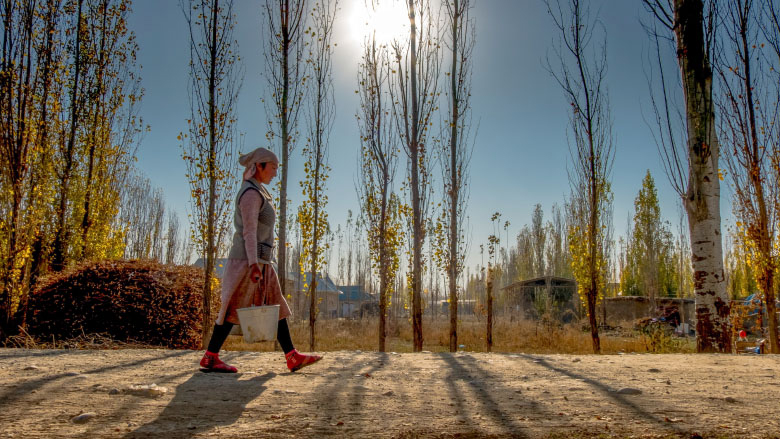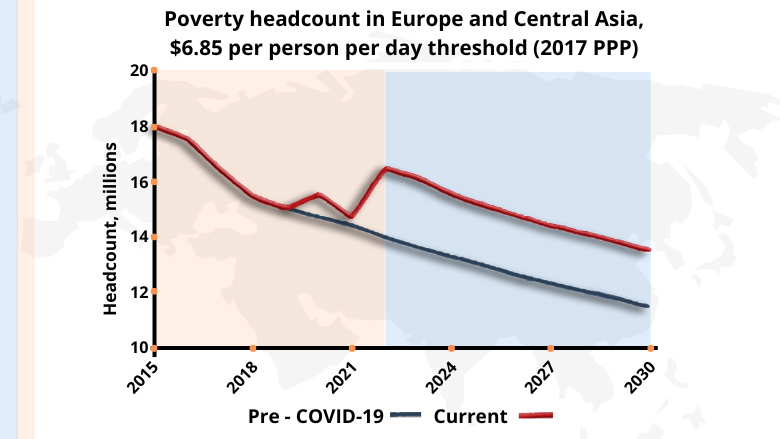Global Overview
The COVID-19 pandemic triggered a pronounced setback in the fight against global poverty — likely the largest setback since World War II. Many low- and middle-income countries have yet to see a full recovery. High indebtedness in many countries has hindered a swift recovery, while rising food and energy prices — fueled in part by the Russian Federation’s invasion of Ukraine and climate shocks among the world’s biggest food producers — have made a return to progress on poverty reduction more challenging than ever.
These setbacks have altered the trajectory of poverty reduction in large and lasting ways, sending the world even further off course on the goal of ending extreme poverty by 2030. The year 2020 marked a historic turning point—an era of global income convergence gave way to global divergence as the world’s poorest people were hardest hit. The richest people have recovered from the pandemic at a faster pace, further exacerbating differences. These diverging fortunes between the global rich and poor ushered in the first rise in global inequality in decades.
COVID-19, along with surging relative hikes in food and energy prices, have affected every economy around the world. Yet the impact has not been uniform across countries. In fact, it has been a function of the policy choices made during the crisis. Similarly, a range of policies and actions today will be critical to a resilient recovery tomorrow.
Learn More: Poverty and Shared Prosperity 2022: Correcting Course
Europe and Central Asia
From the beginning of the pandemic until the end of 2021, job protection policies appeared to have contained the decrease in employment, increase in inactivity, and poverty headcount rates. These effects were significant in countries with weaker pre-pandemic social insurance systems, while in countries with broader coverage of the social insurance system, the income and job protection programs appear to have had limited impacts on employment and poverty. Heavy spending on job protection policies seems to have been associated with lower poverty rates across countries during the early post-pandemic period.
Escalating geopolitical tensions have triggered a possible energy crunch in Europe. Soaring energy prices put millions at risk of poverty. The sharp rise in commodity prices has passed through to inflation and heightened concerns about energy security not only for the most vulnerable households in the region, but also for non-poor households who might not have enough resources to keep warm during the winter.
As a result of the overlapping shocks from the pandemic and the war in Ukraine, the poverty headcount at the $6.85 (per person per day, in 2017 PPP) threshold is anticipated to be almost 20 percent higher — or 2 million people more — in the Europe and Central Asia region by 2030 relative to pre-pandemic trends.
Learn More: Europe and Central Asia Economic Update - Fall 2022: Social Protection for Recovery

